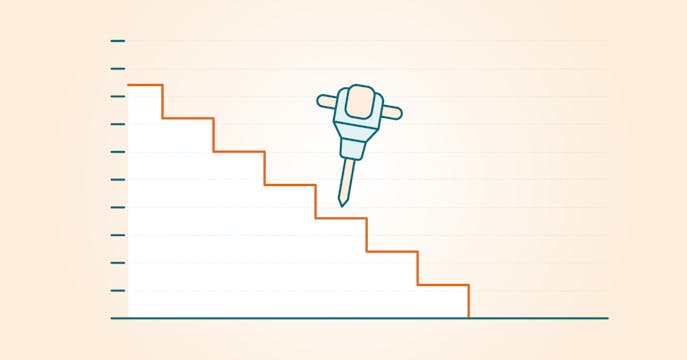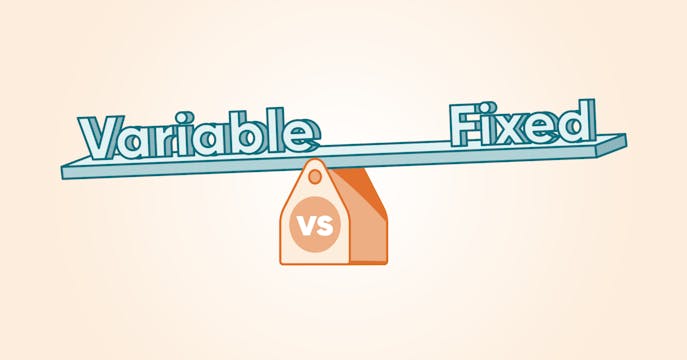Let's dive deeper into the latest economic numbers.
Why is Canada's inflation lower in October 2025?
For Canada's latest CPI (Consumer Price Index) report, headline inflation in October eased to 2.2% from Septembers 2.4%, largely due to lower gas prices, still under base year effects of the cancellation of the carbon tax in April 2025 (i.e. gas prices look lower than they are).
Stripping out the volatile energy component, the remaining CPI baskets also eased to 2.6% from 2.7% last month. And core inflation (the average of median and trimmed measures) also dropped to 3.0% from September's 3.1% in August.
However, the National Bank noted that 33 components saw price increases over the past 3 months, and other readings, such as the CPIX and CPIXFET, also rose — meaning underlying pressures are still very much present. Not surprising, considering the tariff and trade environment.
This report will underscore the Bank of Canada's estimation that inflation is remaining stable, despite the risks and economic instability, which will likely keep it to the sidelines to watch the recent rate cuts work through the economy.
Is Canada's labour market weakening in late 2025?
It seems not, with the unemployment rate declining 0.6% since September, now down to 6.5% from a 7.1% high this summer.
Despite a third consecutive monthly upside surprise in Canada's November job numbers (another 54K jobs created when a loss of 2.5K was expected), experts aren't entirely convinced that a sleeping giant isn't lying in wait. Most jobs created in the past two months have been part-time, with youth employment finally seeing some relief — the 15- to 24-year-old age group gained 1.8% in employment.
Trade disruption is still wreaking havoc, and experts are nervously waiting for the impact to reappear. Many businesses are still in 'wait' mode for both hiring and investment.
So far, however, the second half of 2025 seems to hold some resilience. According to the National Bank, the 180K cumulative jobs added over the past three months is 'a sequence in the Canadian job market only seen in 2002.' Trade-impacted sectors, such as steel, aluminum, lumber and autos, which are very important in Canada's economy, are being hit hardest by layoffs, but the spread to other sectors has remained limited.
Lowered immigration targets — which could bring population growth to near zero in 2026 and 2027 — are part of the reason labour numbers are improving. The participation rate in November declined by 0.2% to 65.1%.
Uncertainty will persist until a new U.S. trade agreement is announced (or the old CUSMA is left mostly intact). But the Bank of Canada won't lower its policy rate with a labour market improving at this rate month by month.
How is Canada's economic growth being affected by trade disruption in 2025?
Flashback — A look at the GDP in previous quarters:
- Q1 2025 saw an unexpected real GDP gain of 0.4% (annualized growth of 1.6%), matching the increase in Q4 2024, likely due to consumers and businesses trying to get ahead of the U.S. trade war.
- Q2 2025 was a recessionary quarter: 0.2% contraction in real GDP and -1.6% annualized growth, a significant drop from the +2.0% pace recorded for Q1 2025.
Update December 2, 2025: Statistics Canada recently revised its GDP data for 2022 to 2024, saying that the economy expanded 1.7% more than thought for those three years.
The threat of a recession disappears for Q3 2025, but will it reappear later?
The annualized growth pace grew to an unexpected 2.6% in Q3 2025 (0.5% real GDP growth, following the 0.3% decrease in Q2) — but it amounts to a festive-looking balloon about to be popped by a sharp dose of reality.
That's because in reality, that brisk growth is primarily due to a sudden spike in government military spending coinciding with a tangible drop in imports (which are usually subtracted from exports when calculating GDP, aka gross domestic product).
And, one of the most significant measures of economic revving, household consumption, dropped by 0.4%, the worst reading since the pandemic.
October GDP is already looking more grim, projected to fall by 0.3%.
So, the economic growth party hasn't started yet — Q3 numbers are just an early, enthusiastic arrival that may have to wait for the rest of the guests (Q4 results) before a celebration can commence.
Note: The U.S. government shutdown is skewing Canada's Q3 GDP numbers, as import/export data reporting is still being compiled.
How is economic volatility affecting Canada's housing market in 2025?
National housing sales growth and home price averages inched up slightly in October 2025, but was still down by over 4% year over year.
Some buyers and sellers are coming off the sidelines, perhaps out of necessity, or simply because there are more deals available in higher-priced markets, such as those in Greater Toronto and Greater Vancouver. Others may be buying before prices rise further in lower-priced, higher-value markets, like those in Manitoba and Saskatchewan.
Two consecutive Bank of Canada policy rate cuts could spark increased winter and spring 2026 housing activity among Canadians who have been waiting (forever) for the right time to buy, despite financial concerns from the ongoing U.S. trade war. If sellers also flock to list, demand may balance out enough to keep home prices stable.
Read more here: Housing Market Forecast (2025-2029)
How is the U.S. economy influencing Canada's interest rate outlook?
Like it or not, our countries' economies are closely linked.
With a Trump presidency, here are some current concerns:
- The U.S. government shutdown is delaying numbers, or skewing the data, giving economists a tougher read on the economy
- U.S. trade policies are causing supply and demand shocks, resulting in increased inflation in both countries.
- Trade disruptions and higher U.S. tariffs on certain Canadian imports are injecting significant uncertainty for Canadian companies and consumers, interrupting planning, hiring, investment, and spending decisions.
- Immigration issues between the two countries may further diminish our labour productivity.
- The interest rate divergence between the two central banks is 2.0%, pressuring input prices.
- Proposed U.S. taxes (section 899 of the One Big Beautiful Bill Act) on Canadian investments and companies could have a significant impact on our economy.
- U.S. government debt is ballooning — current U.S. debt interest payments exceed the defence budget — and tariff revenue is $100B less than expected so far.





